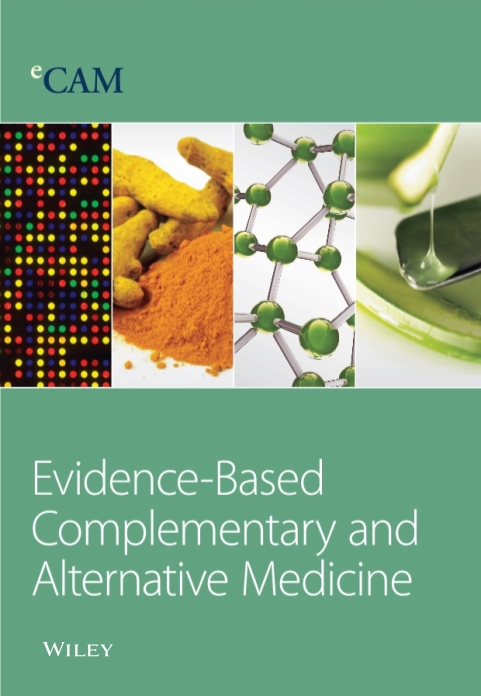采用三种项目缩减方法编制短式阴虚量表
4区 医学
Q2 Medicine
Evidence-based Complementary and Alternative Medicine
Pub Date : 2024-01-19
DOI:10.1155/2024/5533815
引用次数: 0
摘要
背景。阴虚(YD)是一种以消瘦、午后发热、口干、盗汗为特征的病理状态。阴虚体质的发病率为 23.3%。阴虚量表(YDS)共有 27 个项目,用于估计阴虚的临床严重程度。本研究旨在使用三种减少项目的方法,开发三种简式阴虚量表版本,以减少应答时间的负担:拉施(Rasch)、等差数列项目总相关性(EITC)和基于因子的分析。方法。分析了以往研究中的两个数据集(2009 年 5 月至 6 月的 169 名门诊患者和 2016 年 1 月至 4 月的 237 名健康大学生)。采用拉施分析法对最佳反应类别进行了研究。使用 EITC 确定了项目-总相关性较高的项目。采用基于因子的方法减少了项目,同时保留了原始的 YDS 结构。使用人际分离指数(PSI)和 Cronbach's α 值估算了信度。预测准确性采用曲线下面积(AUC)进行检验。最后,使用 YDS 和韩文版奈梅亨问卷(KNQ)的因子得分检验了 YD 和功能性呼吸障碍(DB)之间的关系。研究结果我们使用 Rasch 和 EITC 方法开发了两个 14 个项目的 YDS 版本,并使用基于因子的方法开发了一个 16 个项目的 YDS 版本。Rasch 分析表明,最佳反应类别为 5 分。EITC 和基于因子的版本的 Rasch PSI 和 Cronbach's α 分别为 2.19、0.855 和 0.827。三种简式 YDS 的 AUC 分别为 0.812、0.811 和 0.818。EITC-YDS 的灵敏度为 0.632,低于其 0.875 的特异性。基于因子的 YDS 的疲劳相关评分与估计 DB 的 KNQ 的因子评分有相当的相关性(r = 0.349-0.499)。结论在青年发展的初筛、流行病学调查和健康检查中,14 个项目的 Rasch 和 16 个项目的基于因子的 YDS 可以取代原来的 YDS。本文章由计算机程序翻译,如有差异,请以英文原文为准。
Development of the Short-Form Yin Deficiency Scale Using Three Item Reduction Approaches
Background. Yin deficiency (YD) is a pathological condition characterized by emaciation, afternoon fever, dry mouth, and night sweats. The incidence of YD is 23.3%. A 27-item Yin Deficiency Scale (YDS) was developed to estimate the clinical severity of YD. This study aimed to develop three short-form YDS versions to reduce the burden of response time, using three item-reduction approaches: Rasch, equidiscriminatory item-total correlation (EITC), and factor-based analyses. Methods. Two datasets were analyzed from previous studies (169 outpatients from May to June 2009 and 237 healthy college students from January to April 2016). The optimal response category was examined using Rasch analysis. Items with higher item-total correlations were determined using the EITC. Using a factor-based approach, the items were reduced, while maintaining the original YDS construct. Reliability was estimated using the person separation index (PSI) and Cronbach’s α values. The predictive accuracy was examined using the area under the curve (AUC). Finally, the relationship between YD and dysfunctional breathing (DB) was examined using factor scores from the YDS and the Korean version of the Nijmegen Questionnaire (KNQ). Results. We developed two 14-item YDS versions using the Rasch and EITC approaches, and a 16-item YDS version using a factor-based approach. Rasch analysis suggested an optimal response category of five points. The PSI of Rasch and Cronbach’s α of the EITC and factor-based versions were 2.19, 0.855, and 0.827. The AUCs of the three short-form YDS were 0.812, 0.811, and 0.818. The sensitivity of the EITC-YDS was 0.632, which was lower than its specificity of 0.875. The fatigue-related scores of the factor-based YDS were fairly correlated with the factor scores of the KNQ estimating the DB (r = 0.349–0.499). Conclusion. The 14-item Rasch- and 16-item factor-based YDS may replace the original YDS during YD’s primary screening, epidemiological surveys, and health checkups.
求助全文
通过发布文献求助,成功后即可免费获取论文全文。
去求助
来源期刊
自引率
0.00%
发文量
1983
审稿时长
2.2 months
期刊介绍:
Evidence-Based Complementary and Alternative Medicine (eCAM) is an international, peer-reviewed journal that seeks to understand the sources and to encourage rigorous research in this new, yet ancient world of complementary and alternative medicine.
The journal seeks to apply scientific rigor to the study of complementary and alternative medicine (CAM) modalities, particularly traditional Asian healing systems. eCAM emphasizes health outcome, while documenting biological mechanisms of action. The journal is devoted to the advancement of science in the field of basic research, clinical studies, methodology or scientific theory in diverse areas of Biomedical Sciences. The journal does not consider articles on homeopathy.

 求助内容:
求助内容: 应助结果提醒方式:
应助结果提醒方式:


